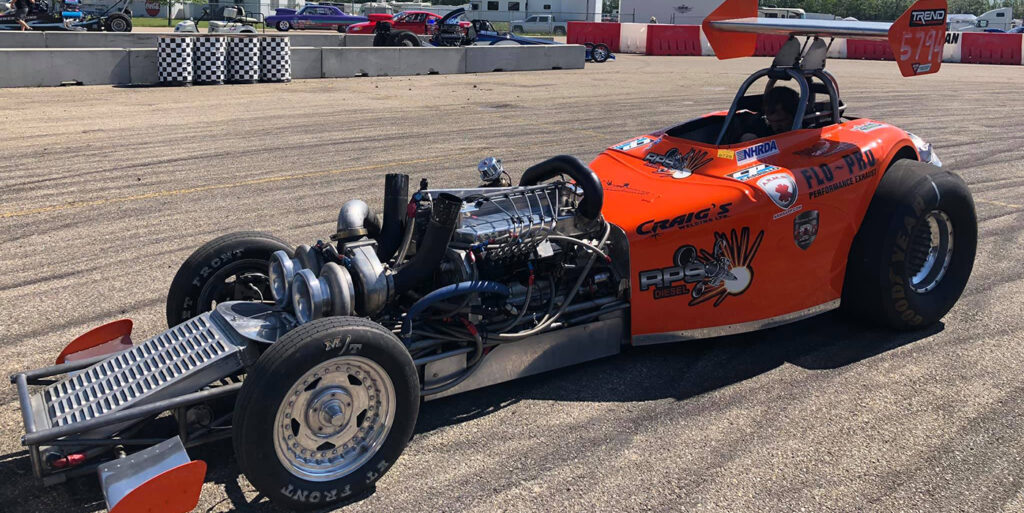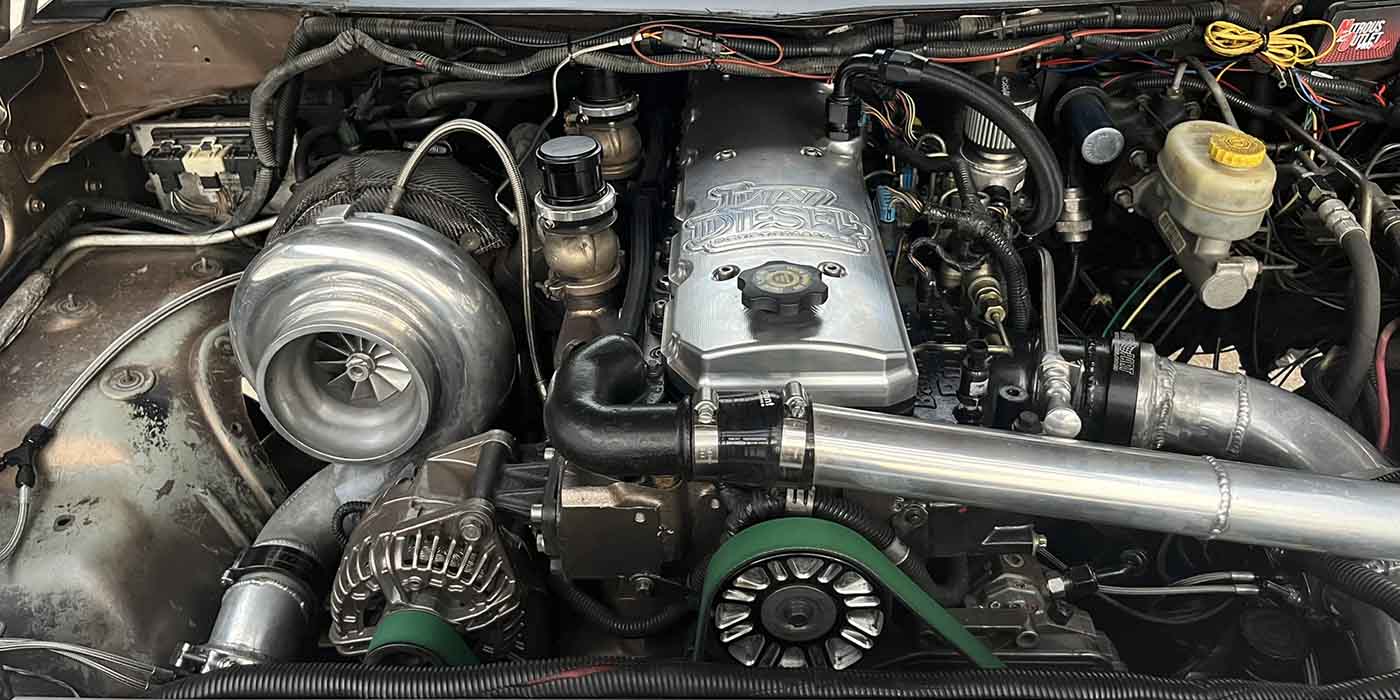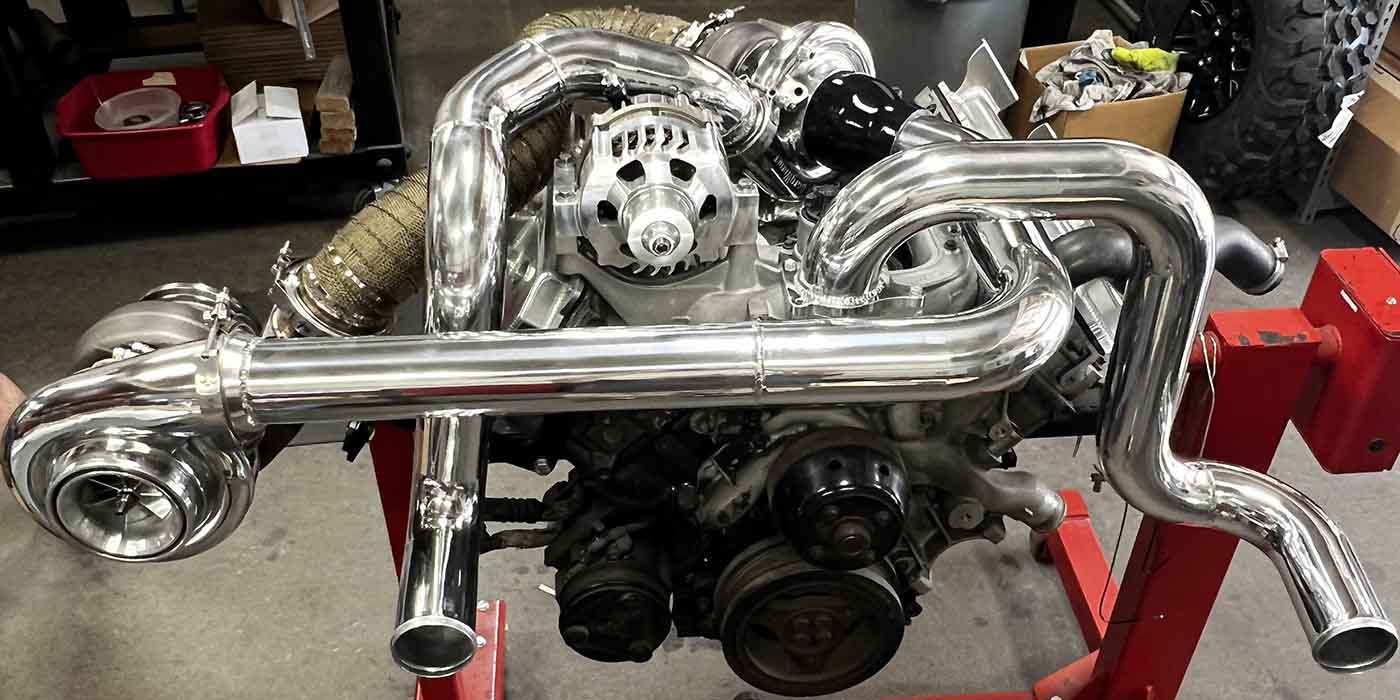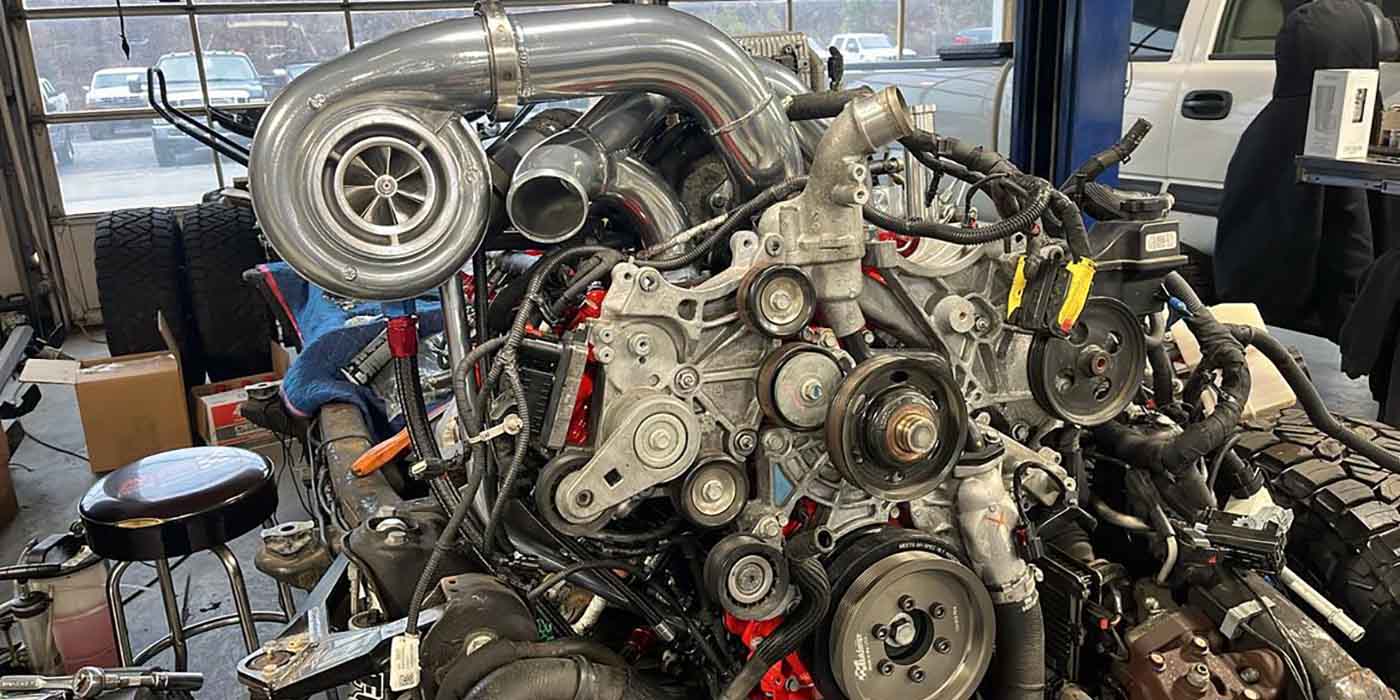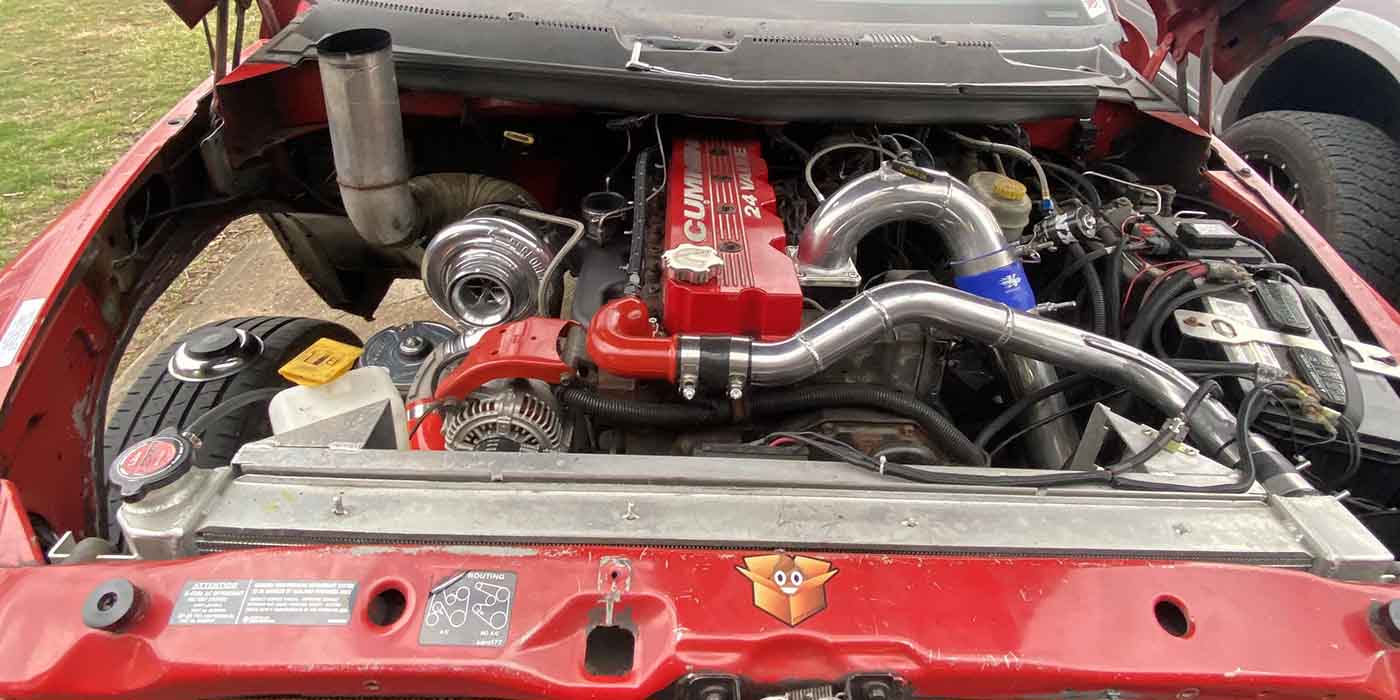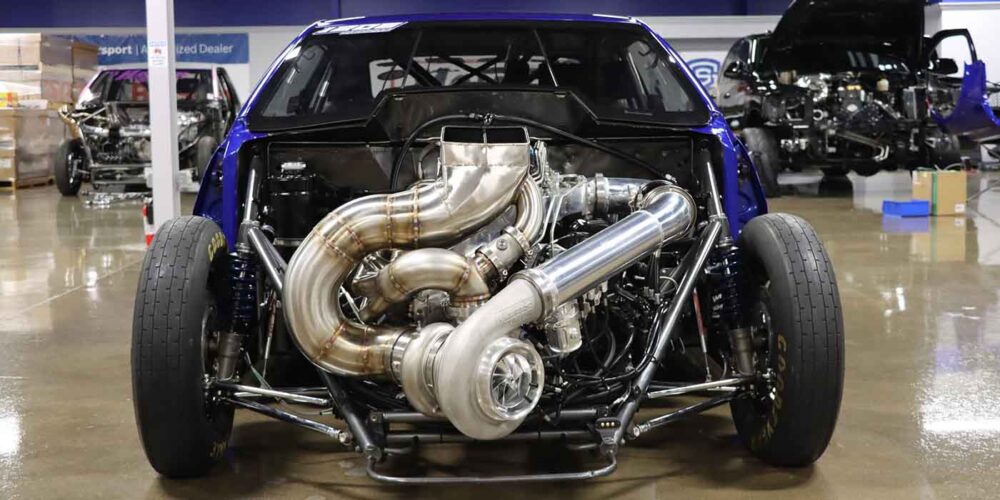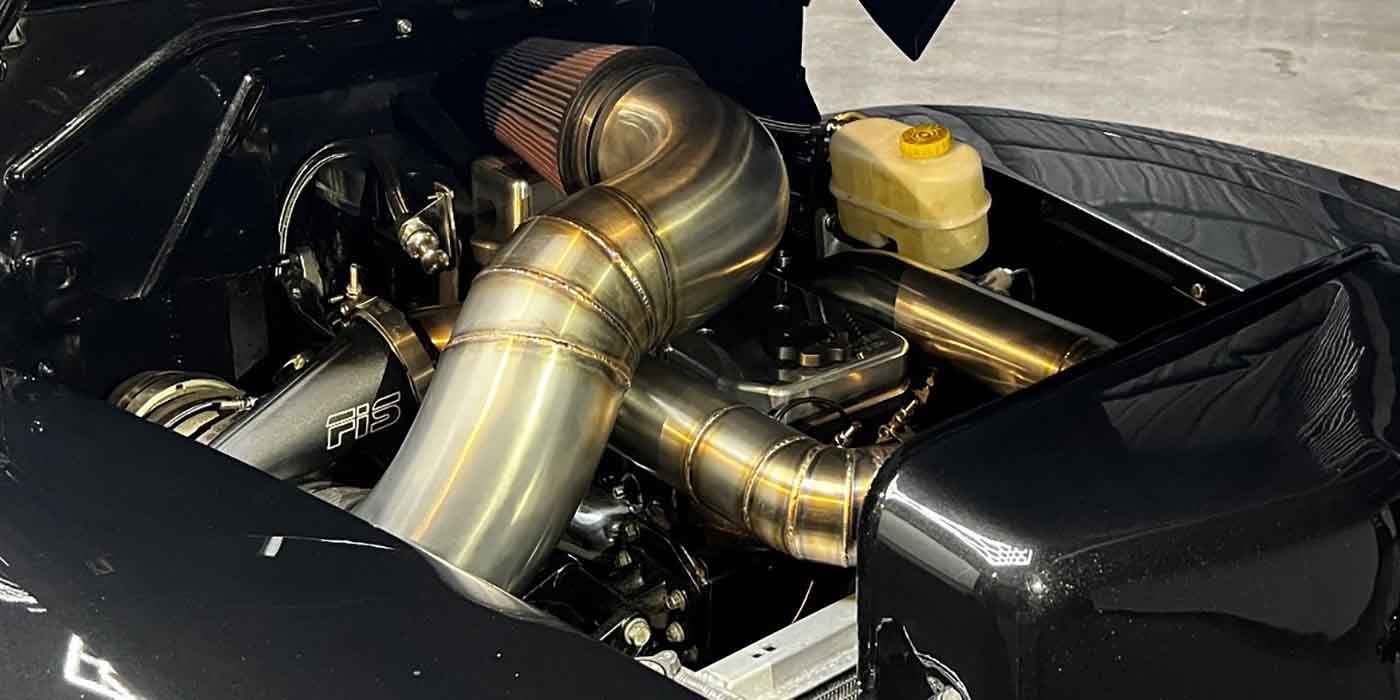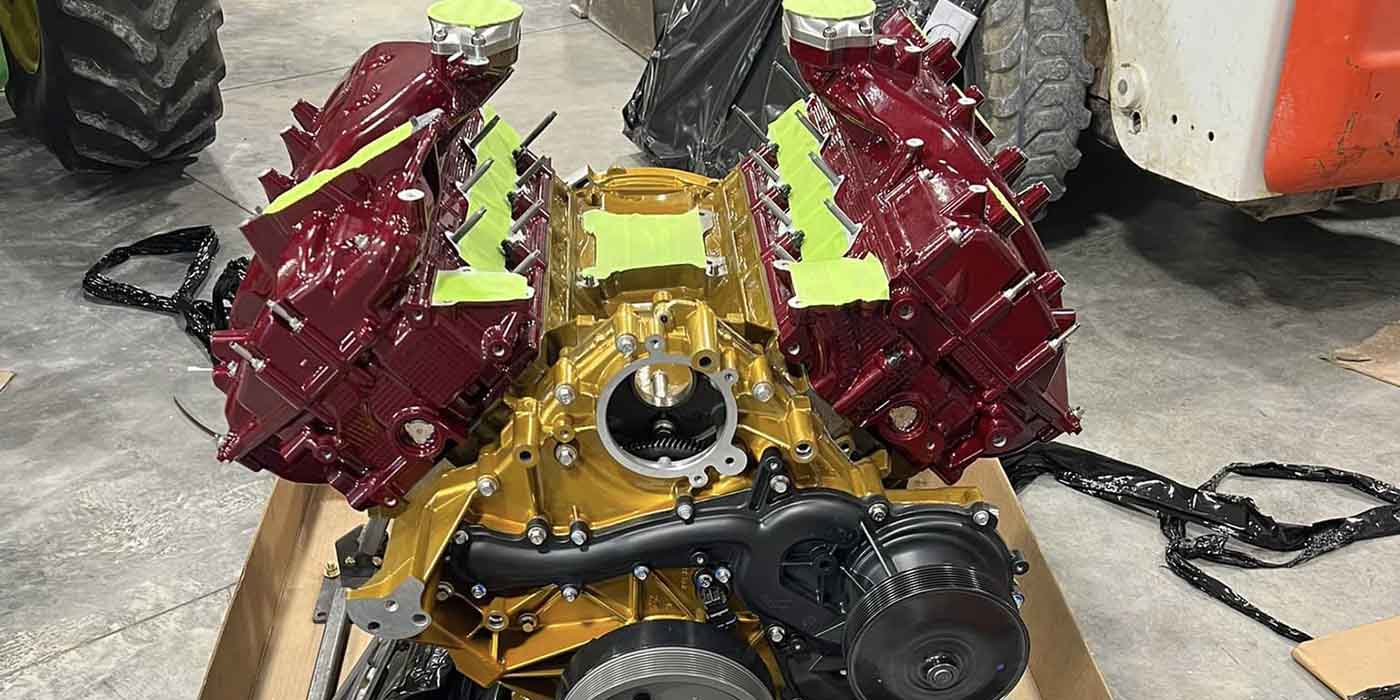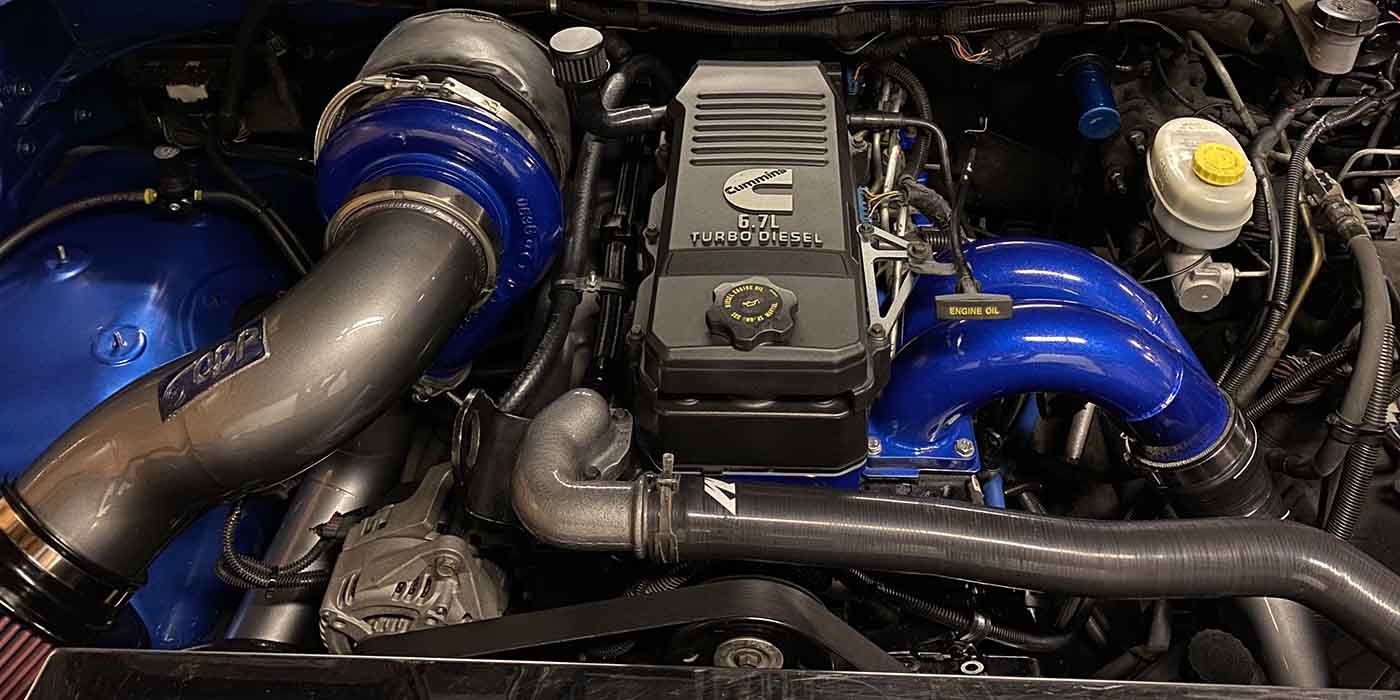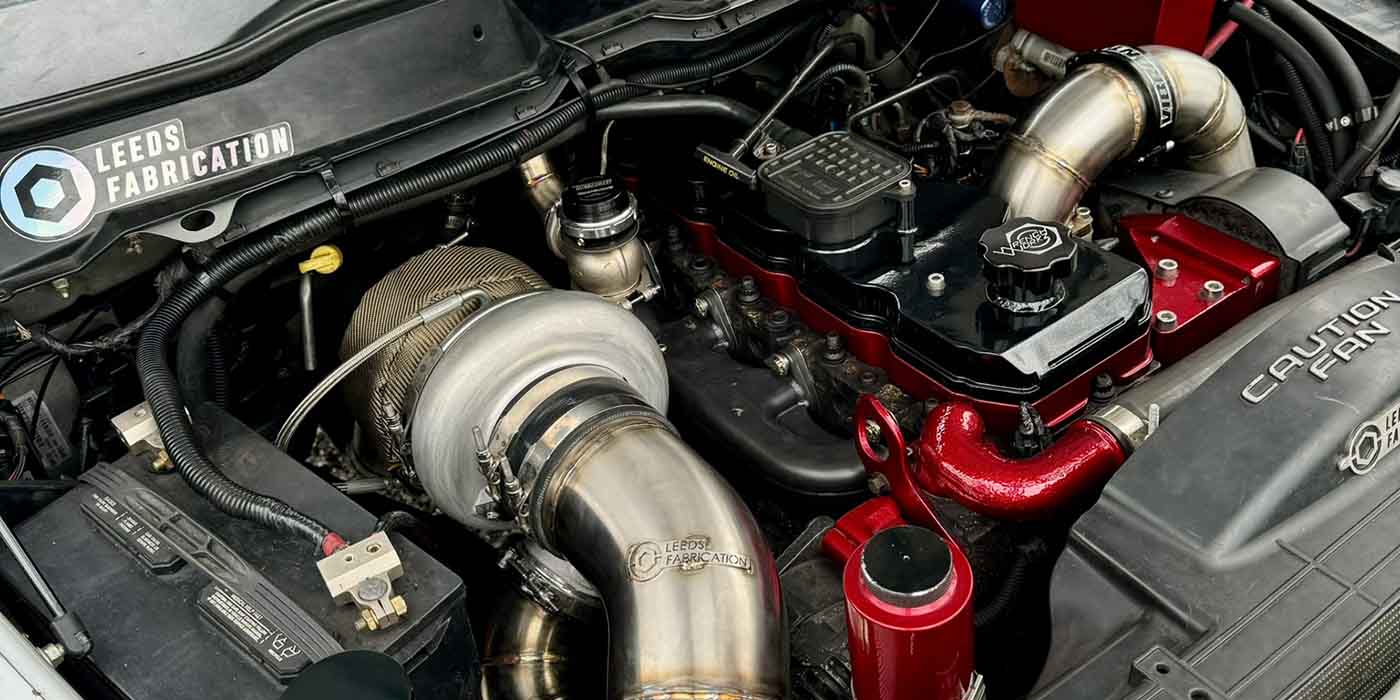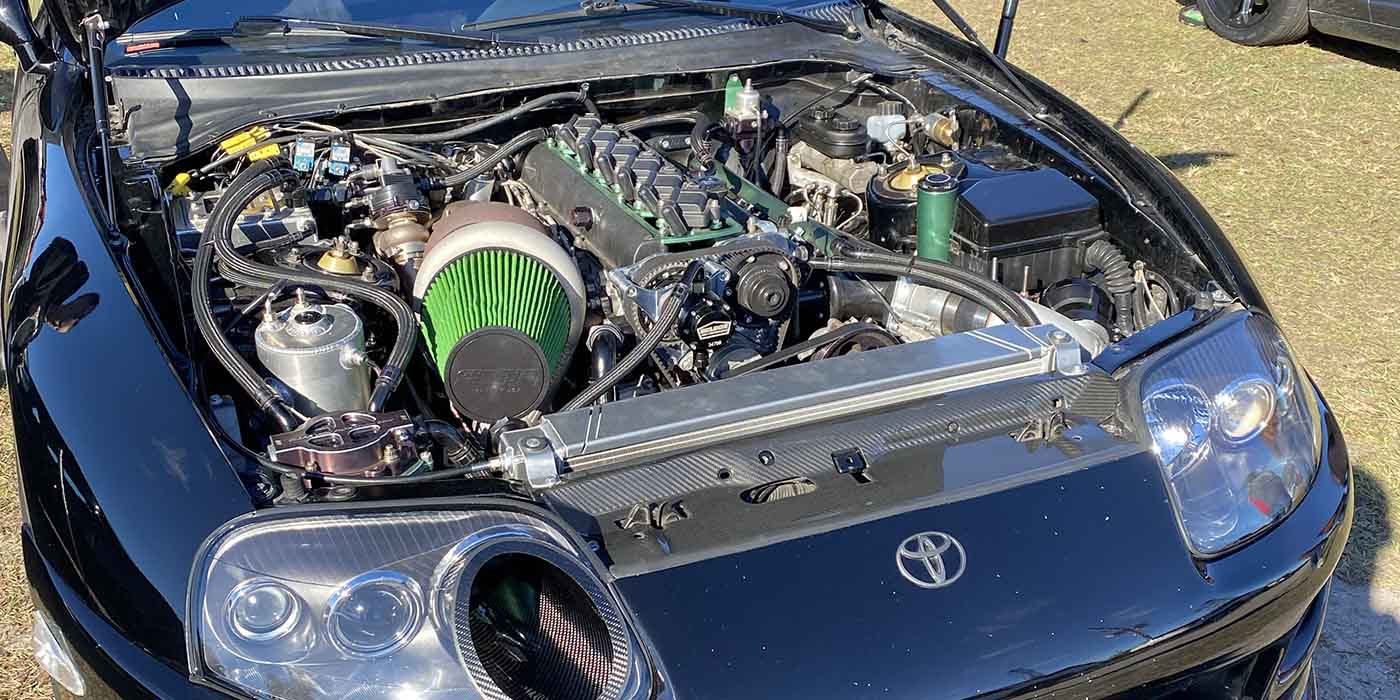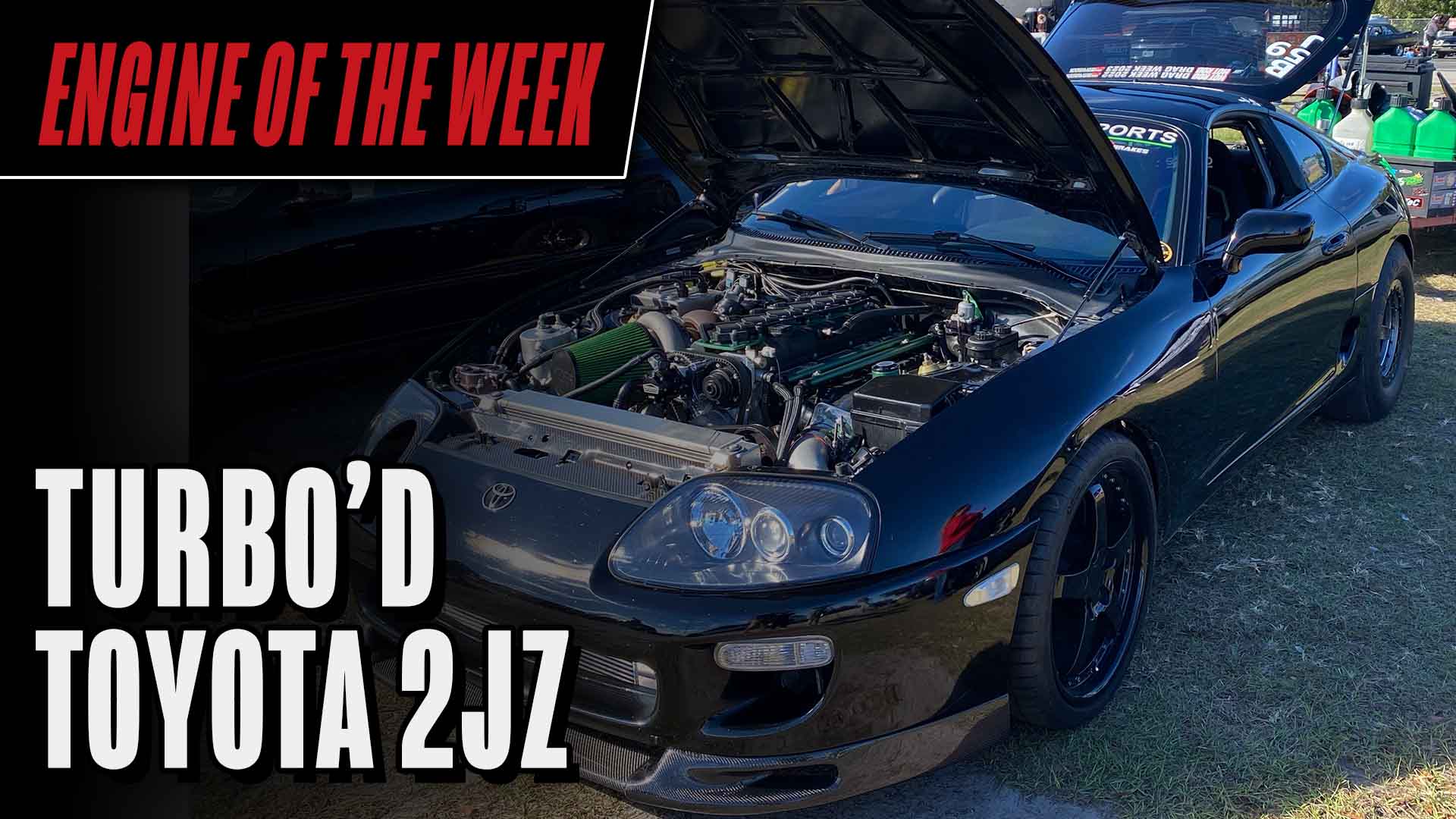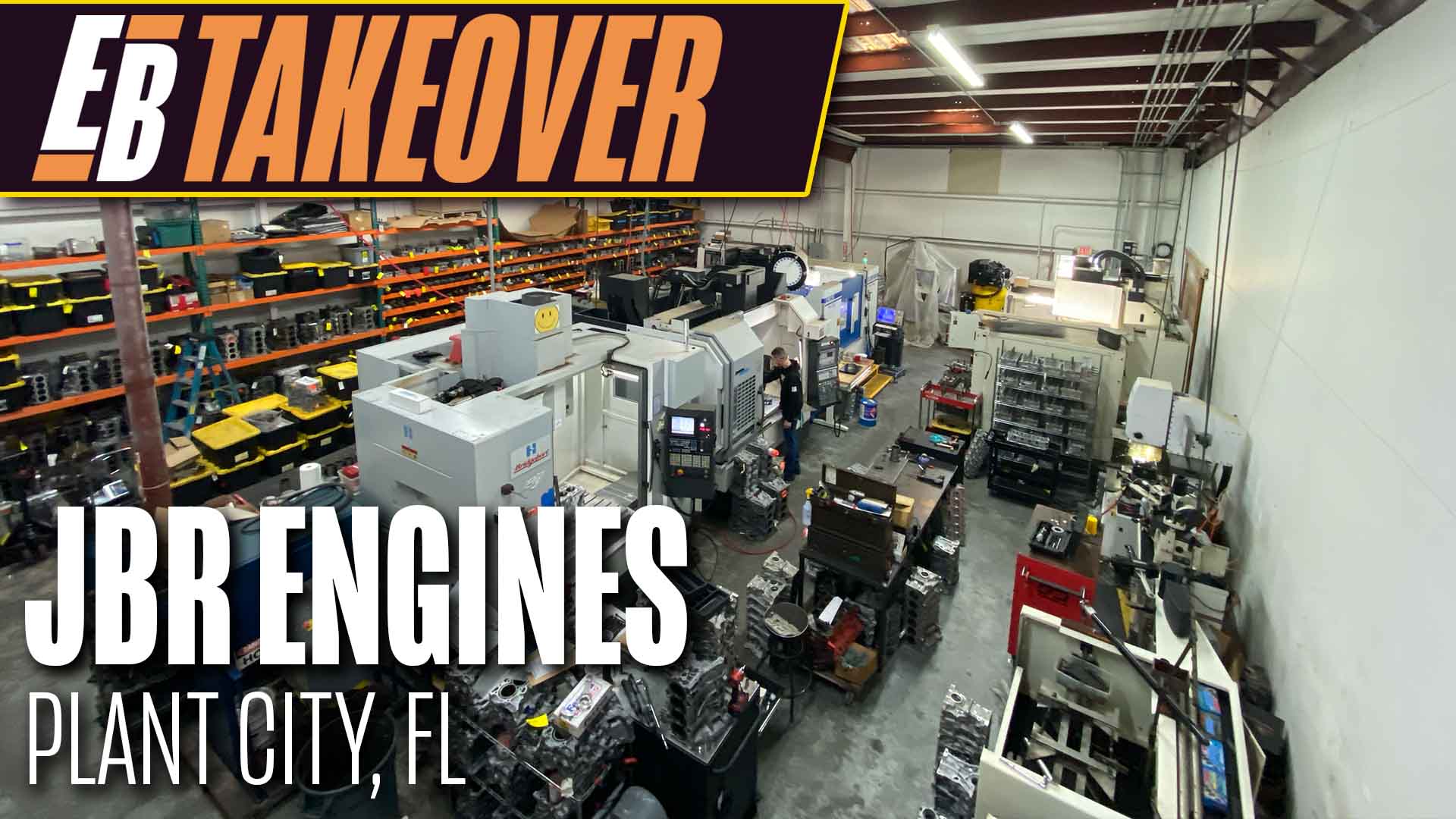Diesel of the Week is presented by

All the way up, north of Montana, outside of Edmonton, Alberta, Canada is a little, under the radar, super high level, innovative engine shop named RPS Diesel. The engine design shop, owned by Richard Mead, is actually located in Sturgeon County, Alberta, but Edmonton is the city most folks know.
Richard’s shop, RPS, which stands for Richard’s Performance Solutions, might ring a bell to the diesel crowd as he has been associated with Wagler Competition Products since both shops use the Street Fighter brand name – RPS has Street Fighter engines and Wagler has Street Fighter rods. According to Mead, the two shops are planning an America vs. Canada diesel race event sometime soon. Aside from that, you might also know RPS Diesel because the shop has one of the fastest diesel cars in the Northern Hemisphere.
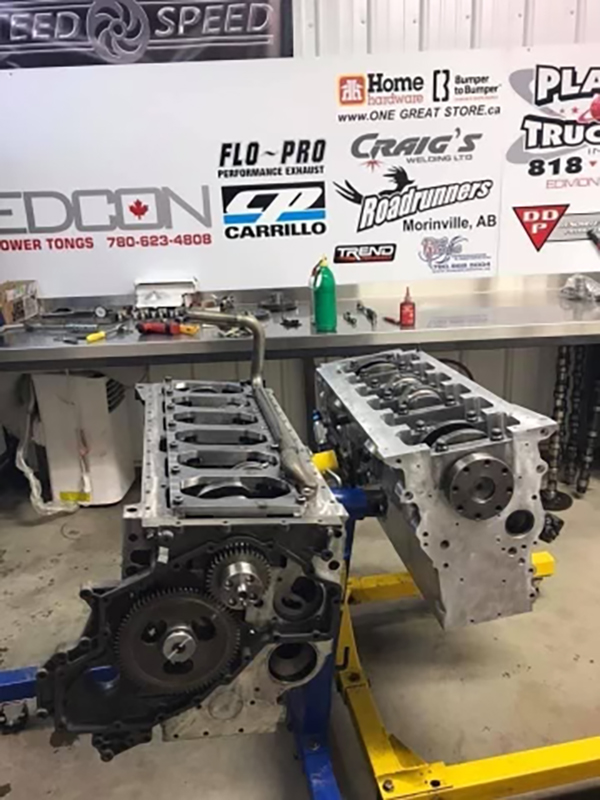
“I’ve always been a hot rodder, whether it was with cars or trucks or snowmobiles – anything,” Richard Mead says. “Way back in about 2002 or so, a few years before I incorporated my business, I started helping my buddies crank up their 12-valves by playing around with old Cummins motors and pickups and stuff like that and turning up the boost.
“By 2004, when I started my company and quit my other job, I was already twin turboing Duramaxes, and I had one of the first EFI Live tuned twin turbo Duramaxes in Canada, way back in 2004. After that, we just started moving up and up and up getting some big name clients. We were doing 9.6 seconds with a common rail Dodge way back in 2009 when it was unheard of. We’ve been at the game for a long time, and then it just snowballed from there into my own drag truck for NHRDA and tractor pulling.”
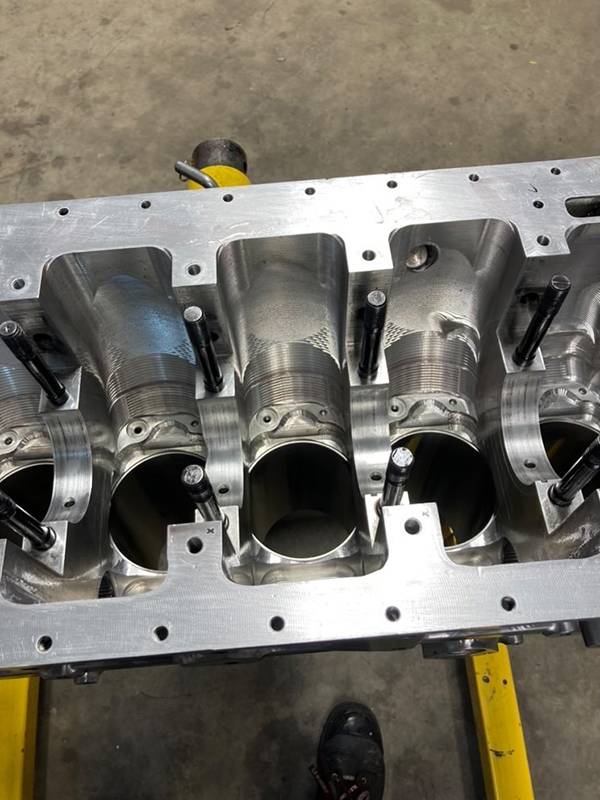
RPS Diesel is a 3,000 sq.-ft. family owned business. It consists of Richard, a lead technician, Richard’s wife, and his son. Despite being small, RPS will work on all three of the big diesel platforms – Duramax, Cummins and Powerstroke. The shop specializes in extremely high output street builds. Over the years, Richard says they’ve advanced from a 500-horsepower daily driver to a 700-horsepower daily driver to a 1,000-horsepower daily driver. Now, they’re working with 1,400-1,500 rear wheel horsepower daily drivers.
“We’ve got quite a few of them out there, and those are Duramax and Cummins,” Mead says. “Our focus is the Street Fighter series motor, which is a wet block. Our newest version is actually 2,000-horsepower capable.”
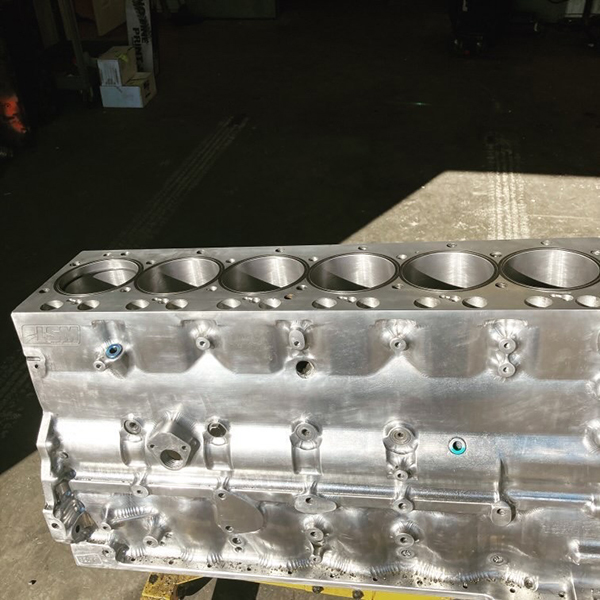
Unlike a lot of the big, new diesel companies on the scene that have a machining background and are designing engines, Richard is a professional engine designer and outsources almost all the machining.
“I have a CNC shop down the road that does all my billet parts,” he says. “I have an engine shop in the city that does all my block stuff. The only thing we do here is design, test and assemble everything. I’m an engine designer first. I’m not a machinist. I hire machinists that are very good at their job.”

For testing, Richard says RPS doesn’t have an engine dyno yet, but the shop is in the process of building one. He says they historically haven’t had an engine dyno due to the 2,500-3,000 ft.-lbs. of torque his high-horsepower diesels produce – engine dynos of the past couldn’t handle it.
“We use a chassis dyno for testing,” he says. “However, our favorite way to test is with a time slip.”
One of Richard’s ultimate engines is a triple turbo, billet, 5.9L 12-valve Cummins, which currently is under the hood of his ‘32 Bantam altered Funny Car for drag racing. He first began developing this engine in 2014 after finally get fed up with blowing up cast iron blocks.
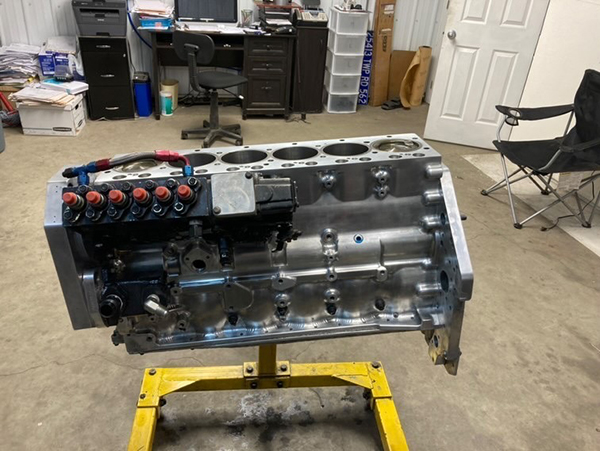
“Back in the NHRDA Super Street days, where we had a heavy, four-wheel-drive truck, we got sick and tired of blowing cast iron engines in half,” Mead says. “When we started pushing these things to 1,500-1,600-plus horsepower and you split a cast iron block, stuff gets scary.”
To remedy a blown-up block, Mead flew to Detroit to meet with LSM Engineering, which had a rough platform of a billet Cummins that they were potentially making for the military.
“We went over a few design changes for the competition side of things, altered a few things, and we ended up making a billet block for a 5.9L Cummins to get rid of a lot of the problems with the cast iron block,” he says. “LSM built the block, but most of the design changes to the oil cooler and the cooling system and the oiling, we did that way back in 2014.”

The Cummins build has a number of unique aspects to it, but one of them is a hybrid CP-Carrillo connecting rod/piston assembly.
“We have a really long connecting rod with a hybrid piston that has a shorter compression height, so what that allows us to do is have the rod ratio of a deck-plated motor,” he says. “A lot of pullers will build a deck-plate engine where they’ll make the engine an inch taller to get a longer con rod to improve the rod ratio. CP-Carrillo built us a hybrid piston and rod assembly that uses a super strong forged piston, like a Top Fuel car, and a slightly smaller pin than a Cummins, but it allows us to run a way longer connecting rod, so we can fit that whole package into the same deck height engine, which is very, very state of the art.
“The rod is 8.415˝ inch. The piston is a hybrid forging with PVD rings, which is an absolute game changer. The compression ratio that we’re running currently is 13:1. We also designed the wrist pins and Trend builds them for me. It’s their H11 tool steel wrist pin that’s DLC coated. The wrist pins are 1.358˝ diameter and .500˝ wall.”
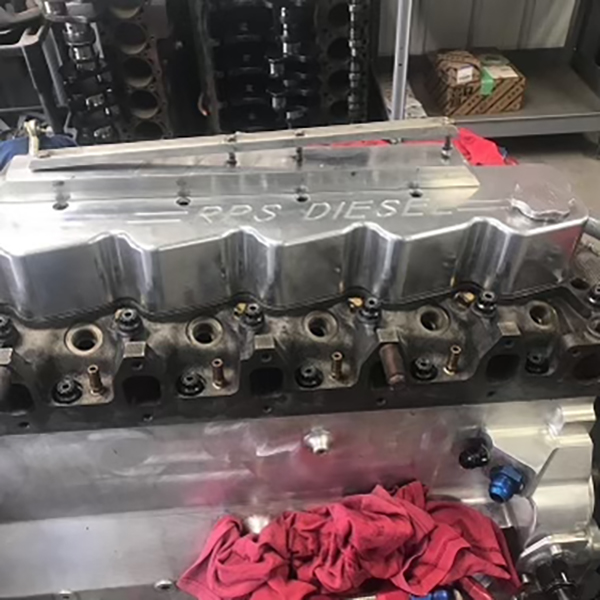
While the piston and rod assembly is pretty trick, Mead says they’ve still been using a bone stock crank, but this year he’s putting in a Winberg billet crank.
“We’ve never had crank issues, but the billet crank is slightly lighter and I ran into one, so we’re going to try it,” he says. “We also run a Barnes dry sump oiling system, which is the absolute most critical upgrade we ever did to the car. For a few years, the car was wet sump. Every time we rattled the tires, it would hurt the motor. When we switched to the dry sump system, we had zero issues with bottom end reliability. The engine doesn’t even have a harmonic balancer on it – never has.”
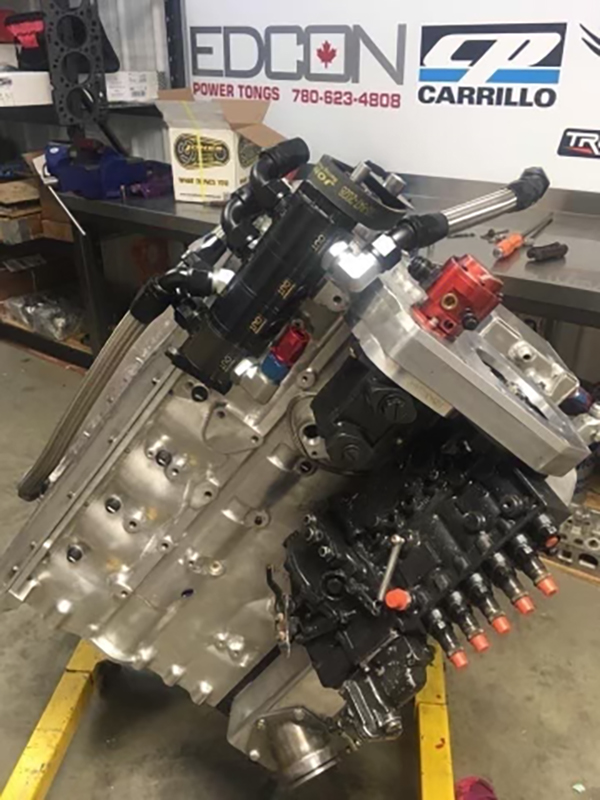
For the cylinder head, RPS Diesel uses a Hamilton 12-valve aftermarket casting that the shop completely reworked to really optimize it through porting.
“We put our own super alloy intake and exhaust valves into the engine, which we get custom made by either Ferrea or Victory,” Mead says. “Then, we have our own PAC racing spring package. That’s actually a single beehive with a super lightweight titanium retainer. We have Harland Sharp roller rocker arms. They’ve been really good to me. The pushrods are from Manton. We use the Series 5 9/16ths exhaust pushrod and a 1/2˝ intake pushrod. They are .188 wall pushrods. They’re huge, really heavy-duty pushrods.
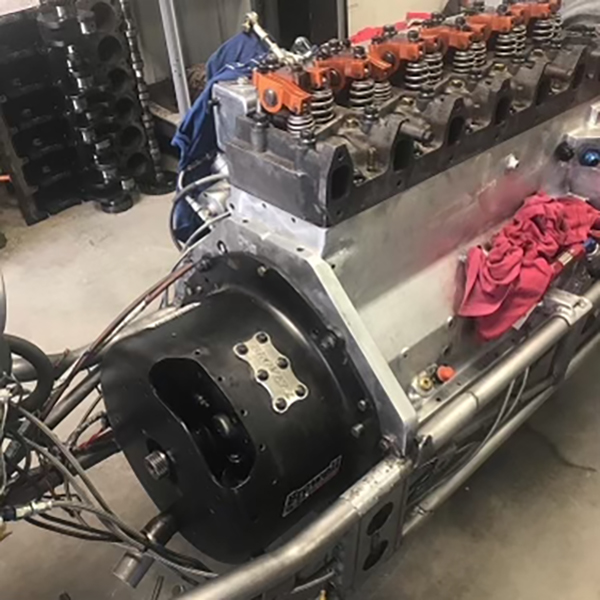
“Jesel built our lifters. Those are Jesel keyway .937 roller lifters and they’re unbelievable. We’ve had them in the car for four seasons and we haven’t even sent them in for a rebuild yet. They’re unreal. We also use a custom made, M2, tool steel camshaft. It’s still a standard 55mm cam tunnel, and we have a custom billet Steed Speed exhaust manifold. It has a state-of-the-art valvetrain.”
Moving into the fuel system, Richard told us he’s using a Dynomite Diesel injection pump and Dynomite Diesel 5x.025˝ injectors, which are pretty small for today’s standards, but RPS makes up for it in crafty ways.
“The fuel system is based on a 13mm P-pump,” he says. “We have some real red neck, high-tech shit. The first thing Cummins guys say is that you can’t make as much power as we have with the 13mm – that’s absolutely the truth – but being broke has its advantages because we have to be crafty. We use what’s called reactive compression ignition, and that’s where we blend methanol based on a map compared to rpm. It changes the reactivity of the fuel charge and adjusts our timing. We can add a whole bunch of fuel at higher rpm, so that’s how we make so much power with such a small pump.
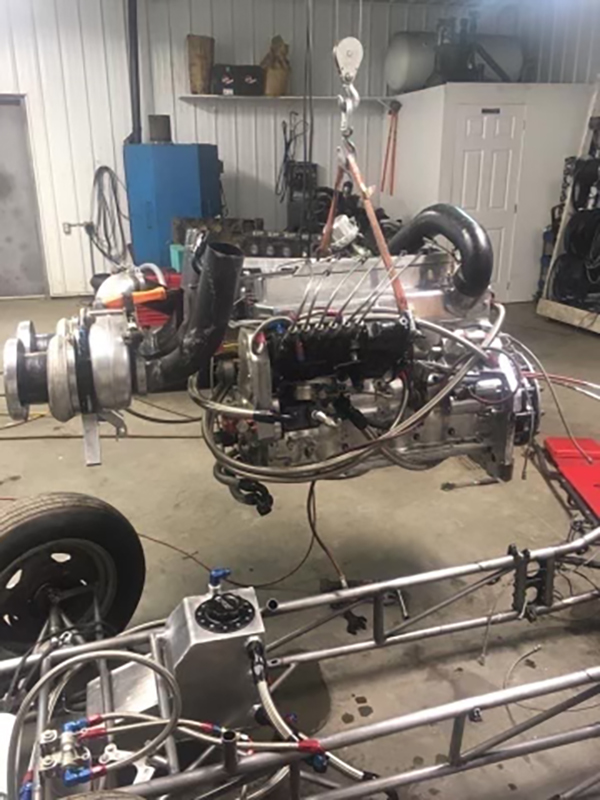
“I messed around with this strategy for years. In the past, we used to blow shit up like crazy trying to get alcohol in there. Over the years of playing around with supercharged diesels and all kinds of billet parts and overheating engines and stuff, we started blending alcohol, but we could never get it to work right.
“In the last three years on my race car, through lots of R&D on the dyno and on the drag strip, we progressively control the alcohol with a solenoid, like a nitrous controller. I actually build the map on my nitrous controller and operate a channel – one for nitrous, one for methanol – and they adjust depending on rpm. It’s a chemical timing event that adds a whole bunch of power. We’re currently putting 600 horse of alcohol into the motor on top of the diesel. That’s how we get up to the power number we’re at with such a little pump. The car has alcohol, nitrous oxide and diesel.”
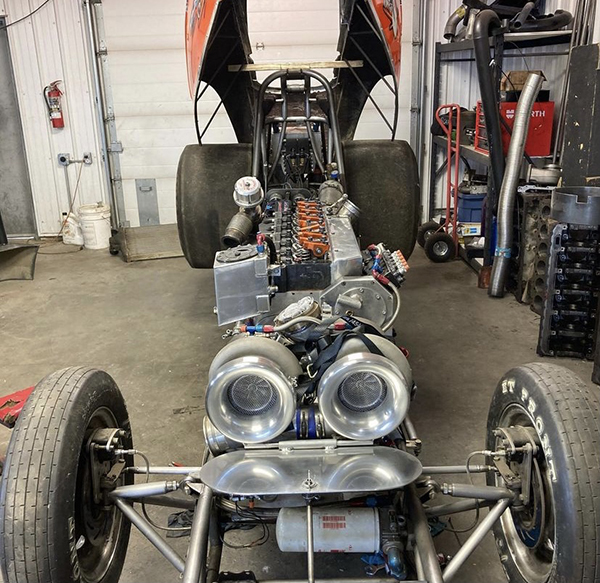
Mead says he will be doing additional reactive compression ignition testing soon and plans to lean on it hard. In fact, there’s a ratio as to how much alcohol you can get in versus the total amount of diesel. According to Mead, eventually you do hit a plateau where it kind of blows the fire out because the alcohol is so cold and you get so much going in there that if you cool the cylinder off too much, then the diesel doesn’t snap anymore. Mead says he’s essentially using the diesel as a liquid spark plug for the alcohol.
And while creative solutions like reactive compression ignition have helped RPS a great deal, so too does the 5.9L Cummins’ triple turbo setup.
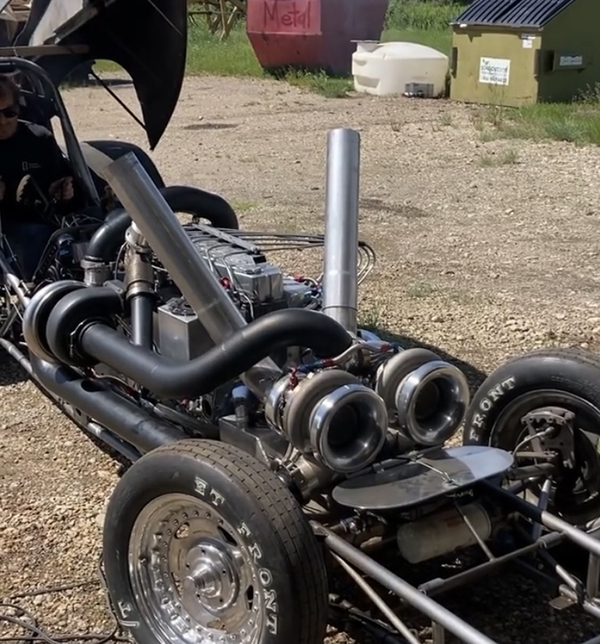
“Our turbo setup features three turbos – two BorgWarner SXE 480 atmospheric turbos feeding into an SXE 588 for the high pressure turbo,” he says. “According to our quarter mile times and stuff like that, we’re putting out like 1,700-1,800 horsepower to the tire, easily.
The billet Cummins engine sits inside Richard’s Top Fuel Funny Car with an altered body, which he bought in the U.S. in 2015-2016.
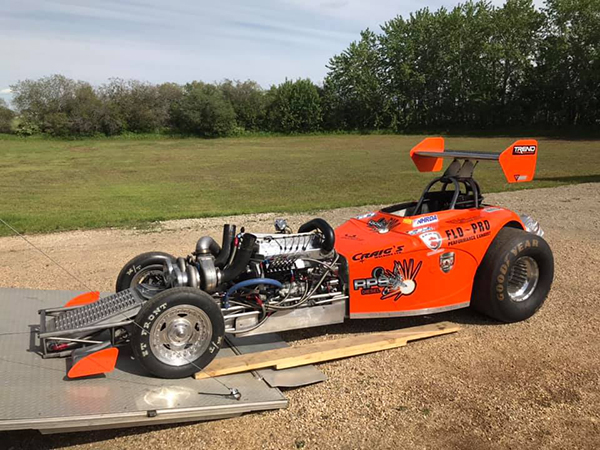
“It’s a ‘32 Bantam altered Funny Car, fully rigid,” he says. “It’s a clutch car. It’s got a two speed Lenco and we run a four disc pedal clutch custom made by Crower. It has a Strange Ultra Case with a Toms differential. They actually call it a 10-inch Ford, but it’s a 40 spline 2.9 ratio based on a 9-inch, but they call it a 10-inch. It’s like a nostalgia Nitro car diff.”
Thanks to plenty of ingenuity and plenty of testing, data logging, measuring, and quality components, RPS Diesel has seen some huge, huge gains with this diesel setup. Richard says the car regularly does 6-second quarter-mile passes. Now that’s fast!
Diesel of the Week is sponsored by AMSOIL. If you have an engine you’d like to highlight in this series, please email Engine Builder Editor Greg Jones at [email protected].

